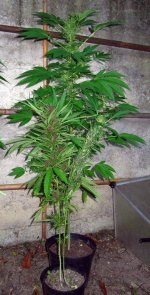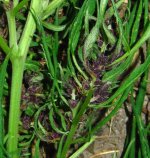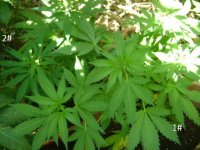Hi everyone,
I stumbled upon anaerobic curing of perique tobacco and I wondered whether this would be feasible with cannabis, mainly because this anaerobically fermented tobacco develops an intense sweet-fruity aroma.
I imagine that an anaerobic cure might have dramatic effects on cannabis flavour because its essential oil is rich in hydrocarbons (non-oxidised terpenes) and, especially myrcene-rich plant material being highly susceptible to oxidation and polymerisation, might undergo interesting changes under oxygen exclusion or retain more of its original aromas...
I suppose that one would have to use some method allowing leakage of progressively generated volatile nitrogen compounds (the thing one wants to eliminate with a good cure) or alternatively do anaerobic cure after a first aerobic one (the latter is sometimes done by hobby tobacco 'farmers'.
Did anyone ever tried it and how did it go?
Greetings
P.S. Started an experiment myself: You find the journal (which I will update regularly) from post #10 on .
.
I stumbled upon anaerobic curing of perique tobacco and I wondered whether this would be feasible with cannabis, mainly because this anaerobically fermented tobacco develops an intense sweet-fruity aroma.
I imagine that an anaerobic cure might have dramatic effects on cannabis flavour because its essential oil is rich in hydrocarbons (non-oxidised terpenes) and, especially myrcene-rich plant material being highly susceptible to oxidation and polymerisation, might undergo interesting changes under oxygen exclusion or retain more of its original aromas...
I suppose that one would have to use some method allowing leakage of progressively generated volatile nitrogen compounds (the thing one wants to eliminate with a good cure) or alternatively do anaerobic cure after a first aerobic one (the latter is sometimes done by hobby tobacco 'farmers'.
Did anyone ever tried it and how did it go?
Greetings
P.S. Started an experiment myself: You find the journal (which I will update regularly) from post #10 on
Last edited:

 .
.






